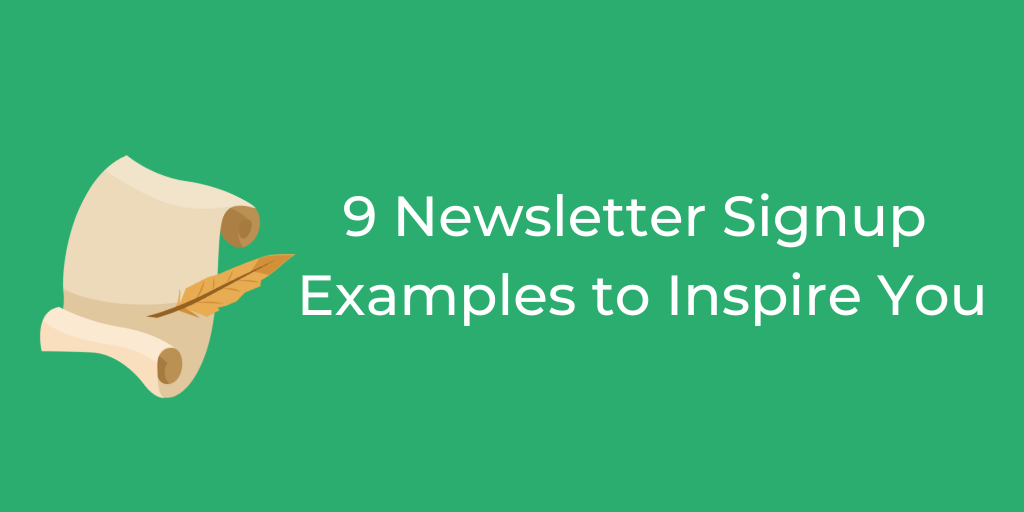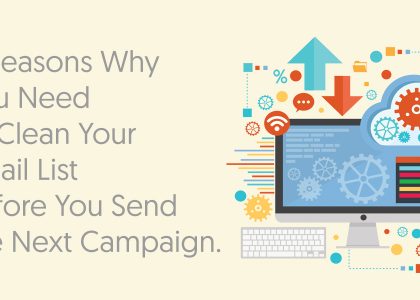9 Newsletter Signup Examples to Inspire You in 2024

Gone are the days when newsletters were just another email in the inbox. Today, they are an art form, a blend of information and creativity, a direct line from creator to consumer.
But what makes a reader click ‘subscribe’?
It’s not just the content, it’s the experience right from the get-go. To compete in a world where the average person receives over 100 emails a day, you’ll need to draw potential readers in with more than just ‘Hey, I have a newsletter’.
These incentives take many forms, from exclusive content and discounts to highly specified and customizable content.
In this blog we’ll dip our toes into the world of newsletter sign-up examples, exploring how they can be a game-changer for your digital presence.
Benefits of making a newsletter
Maybe you’ve already got a newsletter, or maybe you’re asking yourself ‘What is a newsletter?’.
Either way, staying mindful of these benefits will motivate and inspire you to make your newsletter a strong cornerstone in your marketing strategy.
Direct and personal connection with your audience
Newsletters allow you to directly reach your audience in a more personal and engaging manner.
Unlike social media posts that are subject to algorithm changes, newsletters land directly in the inbox of your subscribers, fostering a closer relationship.
Regular interaction through newsletters also gives you key insights into what your audience likes, enabling you to customize your content more effectively.
Brand building and storytelling
A newsletter is a powerful tool for strengthening your brand’s voice and identity.
It’s an intimate platform for sharing stories, insights, and ideas that resonate with your audience.
With each edition, you keep your audience engaged with your brand, reminding them of your presence and value.
Marketing and promotion
Newsletters are an excellent channel for targeted marketing.
You can segment your audience based on their interests and behavior, delivering more relevant and effective promotional content.
The success of newsletters can be tracked through metrics like open rates and click-through rates, providing clear insights into the effectiveness of your marketing strategies.
Community building
Newsletters can create a sense of community among your readers.
By sharing user-generated content or highlighting reader stories, you encourage a feeling of belonging and loyalty among your audience.
Additionally, they serve as a two-way communication channel, allowing readers to respond and engage directly with you, offering valuable feedback and ideas.
Control and flexibility
Unlike other platforms with restrictive formats, newsletters give you the freedom to experiment with layout, content, and design.
You have complete control over the timing and frequency of your newsletters, allowing you to stay in touch with your audience on your terms.
TIP: Are you ready to get started? Check out our 7-step strategy guide on how to create a newsletter!
Anatomy of a good newsletter signup
Before you go off sending emails, you’ll first need to gain a captive audience.
Keep these elements in mind when you’re creating your newsletter signup.
- User-friendly design: A good signup form is straightforward to navigate. It doesn’t overwhelm the user with too many fields or complex steps.
- Clear value proposition: It’s crucial to articulate clearly what subscribers will gain from signing up. Whether it’s exclusive content, regular updates, or special offers, make the benefits obvious.
- Aesthetic appeal: An attractive design that aligns with your brand’s visual identity can make your signup form more inviting.
- Brand consistency: The signup form should reflect your brand’s style and tone, ensuring a recognizable experience for those already familiar with your brand.
- Easy to find: The signup form should be easily accessible, not hidden away in a corner of your website. Consider placing it prominently on the homepage, blog posts, or as a pop-up.
- Minimal intrusiveness: While visibility is key, it’s also important not to disrupt the user’s browsing experience excessively. Strike a balance between prominence and subtlety.
- Privacy assurance: Users are more likely to sign up if they feel their personal information is safe. Include a privacy statement or link to your privacy policy.
Challenges in newsletter signups
With newsletter implementation specifically, there are some challenges to be mindful of.
Here are a few you may run into on your journey to be the #1 newsletter writer of the century.
- High competition: With countless newsletters available, standing out enough to encourage signups is a significant challenge.
- Email fatigue: Many users are wary of overcrowding their inboxes, making them hesitant to subscribe to new newsletters.
- Initial engagement: Convincing visitors to sign up is only the first step. Keeping them engaged enough to not unsubscribe is an ongoing challenge.
- Content relevance: Continuously generating content that is both relevant and interesting to your audience can be demanding.
- Technical issues: Problems with form functionality or compatibility across different devices can deter potential subscribers.
- Design constraints: Creating a signup form that is both functional and aesthetically pleasing, especially on mobile devices, requires careful planning and testing.
- Privacy concerns: In an era where data privacy is paramount, convincing users that their information will be safe and not misused is crucial.
- Spam fears: People often associate newsletter signups with an increase in spam, which can be a deterrent.
Best newsletter signup examples
We’ve split these 9 awesome examples into three categories:
- free resources
- multiple options for maximum reading pleasure
- stellar discounts
3 Newsletter signups with free resources
Brett Larkin
Brett Larkin is both a guru in the yoga scene and an email marketer.
This newsletter signup offer of a 7-day free yoga challenge is an amazing deal for anyone looking to strengthen their practice or learn more about chakras.
What we like: Brett Larkin’s exclusive content offer is a masterstroke for those interested in her services. The inclusion of a video element and a clear outline of what participants will gain from the challenge adds substantial appeal.
What we don’t: The signup page falls short of providing detailed information about the newsletter itself. Beyond the initial yoga challenge, potential subscribers are left guessing about other benefits and regular content they might receive.
DailyOM
Courses for self-development, horoscopes, and inspiring messages all for free?
DailyOM shows they’re committed to helping their readers by offering so much for only your email address. This customizable newsletter is both versatile and sure to bring some light to your life.
What we like: DailyOM excels with its customizable newsletter, offering many free material. The clean graphics and simple choice options make the signup process both inviting and straightforward.
What we don’t: The lack of images and limited descriptions might detract from the overall appeal, leaving visitors curious but not completely informed about the full extent of what they’re signing up for.
Amy Porterfield
Amy Porterfield, an expert in digital marketing, guides aspiring marketers in the form of reading, podcasts, and in-depth guides. Her pop-up offerings change fairly often, but they always offer enticing and exclusive material.
What we like: Amy Porterfield’s signup is compelling, with a tone of voice that resonates well with her audience. There’s a commendable level of transparency about what’s on offer, and the effective use of images and highlights enhances the overall appeal.
What we don’t: The signup omits details about future emails post-signup, leaving a gap in subscriber expectations. A technical glitch affecting part of the privacy notice and confirm button could also hinder the user experience.
3 Newsletters with Choices and Transparency
The New Yorker
The New Yorker, famous for its wit and insight, has an entire page dedicated to the various types of newsletters you can get.
Ranging from general news to a variety of other specific topics like science, culture, or games, there’s something for everyone when you subscribe to The New Yorker.
What we like: The New Yorker’s dedicated newsletter page is a treasure trove, offering many different topics of interest. The ability to add multiple newsletters to a subscription, preview the newsletter, and clear descriptions of content types are major pluses.
What we don’t: The absence of special offers or enticements, coupled with somewhat underwhelming visual elements, might not captivate potential subscribers as effectively as other aspects do.
Buzzfeed
Love it or hate it, Buzzfeed is a powerhouse of unique content. You can choose up to 8 newsletters and 14 ‘courses’ to be delivered to your inbox.
The topics are mostly light-hearted and fun, giving your inbox a little more spice.
What we like: Buzzfeed captivates with eye-catching pictures and detailed descriptions of content, clearly indicating the frequency of updates. The wide array of options, including up to 8 newsletters and 14 ‘courses,’ promises variety and entertainment.
What we don’t: The focus on shopping-centric content might not appeal to all, and the lack of a preview feature could be a missed opportunity for engaging subscribers.
National Geographic
National Geographic continues to create some of the most captivating and informative content possible, from all corners of the globe. Want to be wowed in your inbox? NatGeo’s got you covered.
What we like: National Geographic impresses with stunning photographs and an option to view newsletter samples, offering a wide range of topics that cater to diverse interests.
What we don’t: The repetitive copy in descriptions for the Animals and Environment sections is a minor oversight, and the lack of information on email frequency leaves a gap in subscriber expectations.
3 Newsletters Offering Discounts
The Gap
The Gap, providing clothing to a mostly American market for more than 50 years, is one of many companies that offer an attractive discount upon signing up to receive emails, which undoubtedly will also offer other incentives to shop with them.
What we like: The Gap’s pop-up signup on their homepage is effectively designed, with exclusive offers and a mention of additional benefits for subscribers. The on-brand visual of a jean jacket adds a nice touch.
What we don’t: The omission of details regarding the frequency of email communication might be a point of concern for those wary of inbox overload.
Human Pro
Putting the ‘fun’ in both fungus and fundamentals (for brain health) is Human Pro, which offers mushroom-based supplements that are claimed to strengthen memory, focus, and more.
Their simple two-layer pop-up design is a unique and clever way to entice readers into signing up for their marketing emails.
What we like: Human Pro’s two-layer pop-up design is clever and visually appealing. The 10% discount offer is enticing, and the requirement to use a real email to access the discount is a smart move.
What we don’t: The directness of the language might be too forward for some, although this is a relatively minor quibble in an otherwise well-executed signup strategy.
Bed Bath & Beyond
Ever wondered what’s in the ‘beyond’ section of Bed Bath & Beyond? Maybe you’ll find out in their newsletter! This home goods megastore has a simple top bar that manages to stand out with its rich blue color and center text. We also think it may stand out because savvy online shoppers are conditioned to scope out ‘%’ signs, but so far there’s no science to back that up.
What we like: The unique top bar offering of Bed Bath & Beyond, with its rich blue color and centered text, stands out effectively. The subtlety of the design, combined with clear language and an unsubscription disclaimer, is commendable.
What we don’t: The subtlety of the design, while elegant, might work against them in attracting attention in a crowded online shopping environment.
Final thoughts
Navigating the world of newsletter signups is a journey of creativity, strategy, and understanding the ever-evolving needs of the digital audience. From the yoga-inspired tranquility of Brett Larkin’s offerings to the varied and rich content of National Geographic, each newsletter brings its unique flavor to the table.
While some dazzle with exclusive material and eye-catching visuals, others remind us of the importance of clear communication and user-friendly design.
The common thread, however, lies in their ability to connect, engage, and offer something of value — whether it’s a moment of learning, a spark of inspiration, or an exclusive deal.
The challenges, from overcoming technical glitches to striking the perfect tone, are but stepping stones in crafting a newsletter that resonates with its audience.
Remember, a newsletter is more than a communication tool, it’s a canvas where your brand’s personality, values, and stories come to life. So, take inspiration from the examples we’ve examined, embrace the challenges, and let your newsletters be a reflection of what you and your brand stand for — authenticity, value, and connection.


